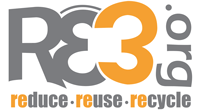My husband’s grandmother’s house sits on a country road way out in the middle of nowhere. Still, her house has curbside recycling collection.
Her recycling can is slightly larger than her garbage can. I have always thought that a lot can be determined about a community based on the size of its recycling bin. Stamped on top of the yellow recycling can lid is a list of the recyclables accepted: paper, cardboard, glass bottles and jars, aluminum and steel cans, aerosol cans, juice and milk cartons, and all plastic containers #1-7. Stamped on the red garbage can lid is the statement “No Recyclables.”

Recycling seemed to be very accessible even while out-and-about. I found these neat looking rubbish (garbage) and recycling cans at a mall. From what I saw during my visit, every rubbish can was accompanied by a recycling container. The two went hand-in-hand. And, yes, I was the odd tourist taking pictures of the rubbish containers.


We drove past the Taree Recycling Center. Unfortunately, I didn’t have time to tour the inside. This recycling center is where my husband’s aunt’s recyclables are taken for sorting.




This paper recycling container is inside a subway station in Sydney. I like that the containers are clear. Maybe it discourages people from throwing garbage in because others will see it!
 Recycling seemed to be a top priority for most Australians, with recycling being accessible whether at home or on-the-go.
Recycling seemed to be a top priority for most Australians, with recycling being accessible whether at home or on-the-go.
 Recycling seemed to be a top priority for most Australians, with recycling being accessible whether at home or on-the-go.
Recycling seemed to be a top priority for most Australians, with recycling being accessible whether at home or on-the-go.
No comments:
Post a Comment